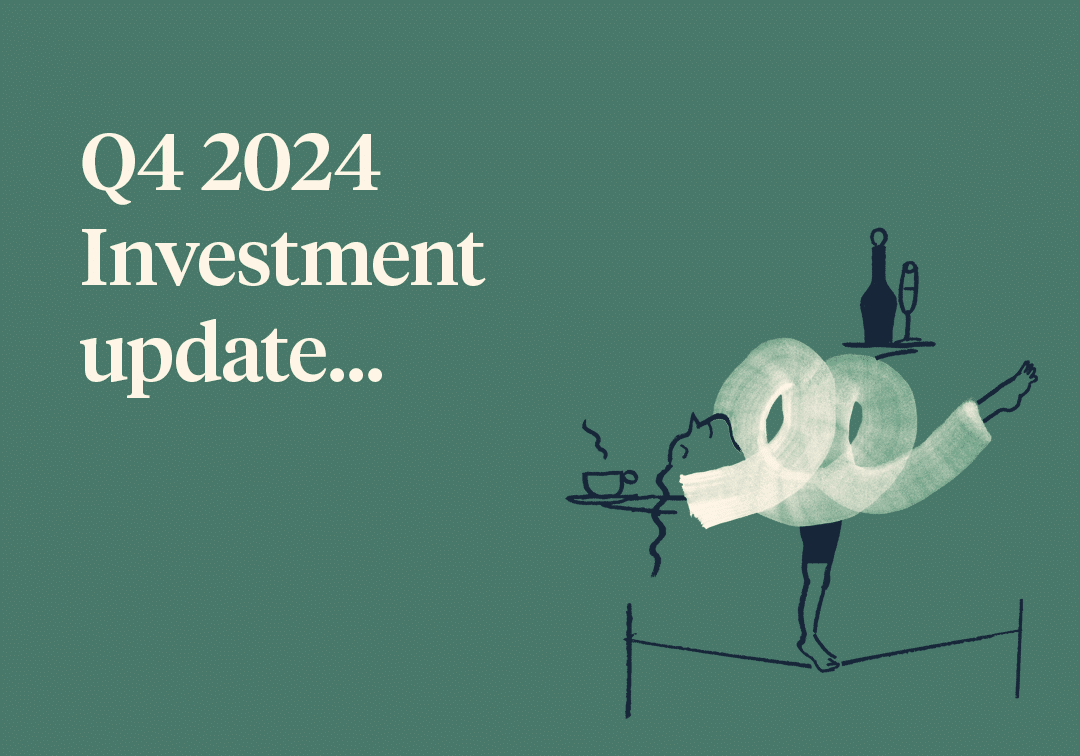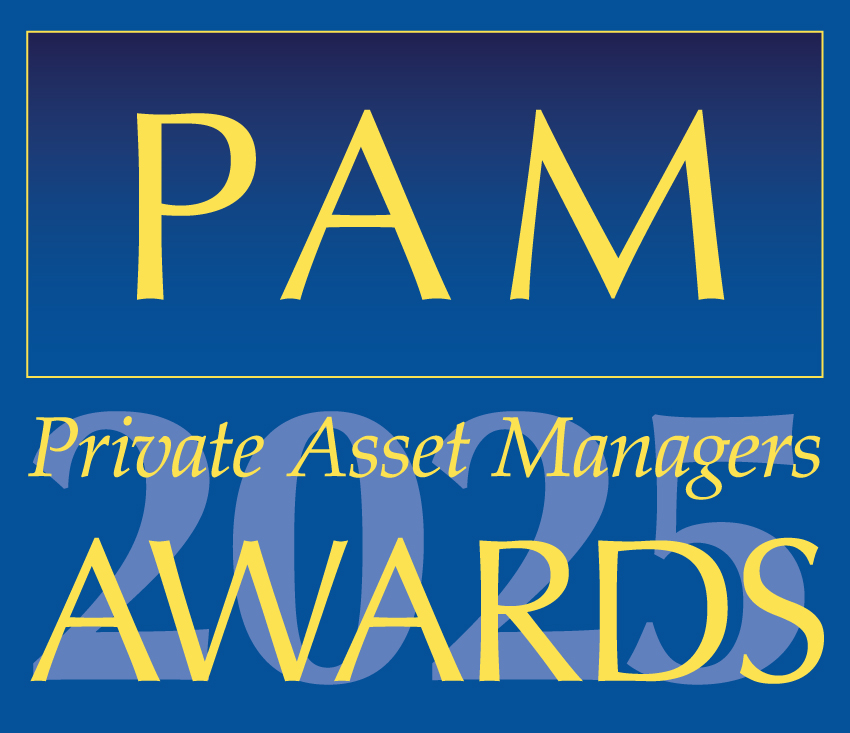Transcript
Jordan Gillies:
Hello and welcome to our Q1 2024 investment update. My name’s Jordan Gillies. I’m one of the partners here at Saltus, and I’m once again joined by Michael Stimpson from our investment team.
Well, Q1 has been a really storming quarter for equities, in particular for the tech sector. However, consequently that means it’s been a little bit more challenging for long duration fixed interest. But it’s certainly seen a tide turning and it’s definitely getting interesting out there.
So what we thought we’d look at was what’s happened in Q1, and then consequently what we’ve done in portfolios to act on that ,and then also get Mike to lift the lid on what we feel might happen throughout the remainder of the year.
So Mike, do we want to start with what’s actually happened in Q1 and what’s been going on?
Michael Stimpson:
Sure, Jordan. Like you said, Q1 was a really good period for, not just stocks, for risk assets generally. High-yield bonds performed really well, and this was predominantly due to the positive themes of global growth and falling inflation staying intact.
We’ve had some challenges to those themes as well. Whenever those narratives were challenged, we had some sticky inflation numbers. For example, central banks managed to soothe nerves by coming out with their dovish commentary.
You mentioned the bond market, the bond market has had to make an adjustment. When we started the year, we were expecting six interest rate cuts in 2024 in the US, and now that’s down to three. But what is pleasing is that the bond market was able to reprice without stopping the momentum in equity markets and over the recent years, that hasn’t always been the case.
A slight word of caution, perhaps, since the bottom of the market in October, valuations are up about 30% in equity markets and earnings are only up about 8%. So we’ve had a big increase in hope and only a little increase in earnings and so we need to see more of those earnings come through to justify the rally that we’ve already had.
But sitting here today, end of Q1, portfolios are up between 1.5 and 8.5% depending on your risk profile. It’s been a good period to be an investor.
Jordan Gillies:
Okay. So essentially what you’re saying, just to clarify with valuations there, is that market sentiment has separated slightly from what you are actually seeing in the underlying data. Are we expecting that to catch up or is it just something we have to keep a close eye on?
Michael Stimpson:
Yeah, I think we definitely need it to catch up. That will not continue to happen. So if earnings don’t come through, equity markets will not continue to make further progress, and we can talk about that a bit more when we talk about the outlook for the rest of the year.
Jordan Gillies:
Okay, fantastic. So given that positive environment for risk assets, what have we actually been doing in portfolios then? How have we been trying to take advantage of the current environment?
Michael Stimpson:
So I’d say broadly we’ve been doing two things, we’ve been backing our conviction ideas, and also trying to find deep value. So you mentioned the tech stocks, for example, have done extremely well. I talked about valuations increasing a lot more than earnings.
We’re trying to invest in some of the areas that perhaps haven’t done so well. So for example, in the US we’ve moved from a market cap-weighted index to an equally weighted index. What that means is a market cap-weighted index is where the largest companies in the index have a bigger weighting, and the smallest companies have smaller weighting. Equally weighted, all the companies have the same and because, as you mentioned, the tech stocks have done the best, they’re also the biggest companies. In a market cap-weighted index, they really, really dominate and so we want to move away from that to invest in some of the US companies that have performed less well.
Jordan Gillies:
Okay, and you mentioned some kind of conviction ideas as well as looking for that kind of value piece. What do you mean by that? And is that kind of a theme or particular feelings within the investment team?
Michael Stimpson:
So I’d say that there are two areas. One is in frontier and emerging markets, which is a reasonably concentrated set of stocks, but with uncorrelated risks. So different recovery stories relying on different things happening, which we think is a really attractive return profile in emerging markets, and the other area is a bit closer to home in the UK. So UK assets are a consensus short globally. No one’s really looking to buy UK assets. But we think they’re starting to offer some pretty good value, particularly in the investment trust sector, which is extremely unloved, discounts have really widened out ,and so we’ve started to pick up some of those investments as well as a sort of contrary play.
Jordan Gillies:
Okay. Fantastic, and are there any other themes that have done well? I mean, that makes sense in terms of we’ve been looking for places that have been hurt, but we think there’s some future value. But is there anything else in the portfolio that you’d highlight as having gone particularly well?
Michael Stimpson:
We continue to keep our overweight to Japan. Japanese equities have performed very well and we also have a significant weighting in gold, which has also performed extremely well, despite risk assets going up as well. So those themes very much remain in place in the portfolios.
Jordan Gillies:
Okay. That’s been really helpful, Mike. So I always get to this point and it’s kind of the million-dollar question. I ask you to get your magic ball out and give us a prediction. So what actually do you think will happen throughout Q2 and the remainder of this year? And what kind of environment are we positioning for?
Michael Stimpson:
Sure. So as we talked about, we’ve had a really good Q1, but most of that is on hope rather than earnings growth. When we started the year, we thought we might have a positive Q1. There could be then some consolidation in Q2, which we’re going into now. Q3 is likely to be very noisy because we’ve got lots of elections, elections in the US and then Q4, we’re likely to move through the noise and continue to make some progress, as we think at that point in the interest rate cycle is likely to have peaked and be on its way back down.
If I stand back here today, the last six months we’ve had a really good period for risk assets. We’ve had a big rally and now there needs to be a moderation phase. We need to now see earnings coming through, there’s likely to be a period where things that have performed perhaps not so well will start to do better. We’re beginning to see some of that in commodities, the oil price for example, the copper price ,and also some of our alternative managers who, again, have had a quiet period while equities have been skyrocketing, we expect them to perform better in more choppy markets over the next three months or so.
But overall, we expect this growth narrative to be tested over the rest of the year, but to come through those tests. And overall some ups and downs, but to continue on our growth trajectory.
Jordan Gillies:
Okay. So a bit of a bumpy journey, but hopefully a journey upwards and diversification across the right asset class is going to be key to get us through this year.
But I think generally, myself included, a lot of people will be reasonably happy to hear a positive story. It feels like it’s been a while.
Mike, thank you so much for joining us, and thank you as well to everyone listening. We hope you’ll join us again for our Q2 investment update. Thanks so much.
Michael Stimpson:
Thanks so much.
Do you need help managing your investments?
Our team can recommend an investment strategy to meet your financial objectives and give you peace of mind that your investments are in good hands. Get in touch to discuss how we can help you.

Article sources
Editorial policy
All authors have considerable industry expertise and specific knowledge on any given topic. All pieces are reviewed by an additional qualified financial specialist to ensure objectivity and accuracy to the best of our ability. All reviewer’s qualifications are from leading industry bodies. Where possible we use primary sources to support our work. These can include white papers, government sources and data, original reports and interviews or articles from other industry experts. We also reference research from other reputable financial planning and investment management firms where appropriate.
The views expressed in this article are those of the Saltus Asset Management team. These typically relate to the core Saltus portfolios. We aim to implement our views across all Saltus strategies, but we must work within each portfolio’s specific objectives and restrictions. This means our views can be implemented more comprehensively in some mandates than others. If your funds are not within a Saltus portfolio and you would like more information, please get in touch with your adviser. Saltus Asset Management is a trading name of Saltus Partners LLP which is authorised and regulated by the Financial Conduct Authority. Information is correct to the best of our understanding as at the date of publication. Nothing within this content is intended as, or can be relied upon, as financial advice. Capital is at risk. You may get back less than you invested. Tax rules may change and the value of tax reliefs depends on your individual circumstances.
Related blog posts
About Saltus?
Find out more about our award-winning wealth management services…
Winner
Investment Performance: Cautious Portfolios
Winner
Top 100 Fund Selectors 2024
Winner
Best Places to Work 2024
Winner
Best Financial Advisers to Work For
£8bn+
assets under advice
20
years working with clients
350+
employees
97%
client retention rate





